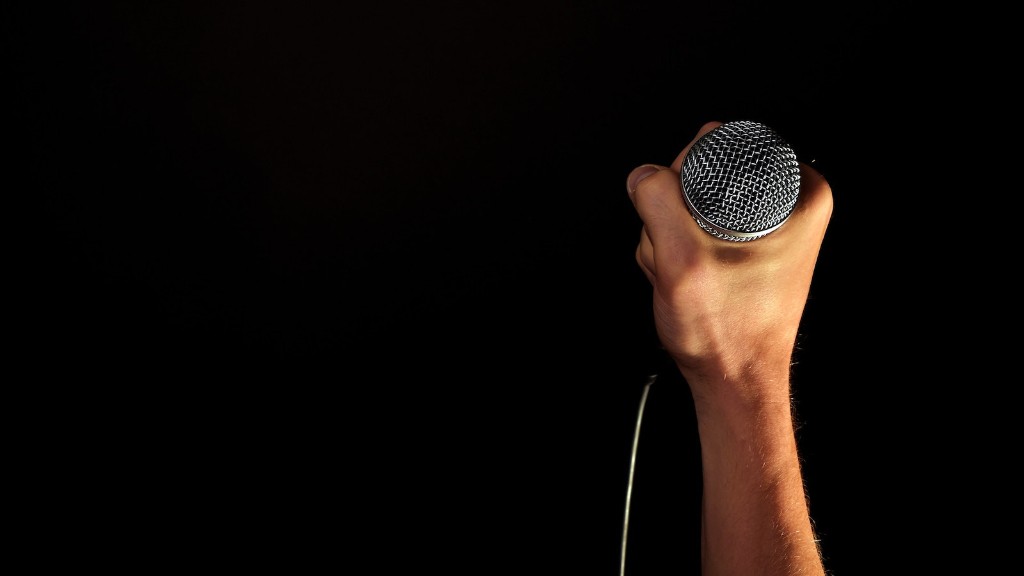How To Draw A Face For Beginners
From the time we are little, drawing faces has captivated our imaginations. But knowing how to draw a face isn’t something that comes easily to most. Don’t worry—with a few practice strokes, patience and passion, you can become a master at drawing faces in no time. Let’s jump right in and explore the basics of portrait drawing.
To begin, you’ll need some basic drawing tools, like a pencil and paper, colored pencils, and an eraser. You can also grab yourself a sketchbook for more comfortable drawing. Ready? Let’s get started.
First and foremost in drawing portraits is getting the proportions of the face right. The best way to learn how to do this is to practice drawing an oval shape a few times over. This is your starting point, and getting a feel for how the face ‘sits’ in the entire oval is key. Once you feel comfortable, it’s time to divide the oval up a bit. A simple way to do this is to lightly draw in two curved lines—one horizontal, one vertical, that cross halfway in the oval.
From here, it’s time to take your portrait a bit further. Now you can add features to your face—starting with the eyes. Remember, eyes are usually half way between the top of the face and the bottom. You can draw the eyes either straight or curved, adding a bit of personality with the shape. Don’t forget to add the pupils and any details the eyes may have!
Once the eyes are complete, it’s time to move onto the nose. Don’t forget that noses come in a variety of shapes and sizes! Keep it simple by drawing a curved line for the nose bridge, then adding some details for the nostrils and the end of the nose. Finish it off by adding two circles for the nostrils.
Afterwards, you can move onto the mouth. This can be a bit tricky, especially for beginners, so take your time! Start off by drawing a curved line for the top lip, then draw two curved lines for the bottom lip. After this, you can add details like creases, shadows and a ‘smile’ line.
Finally, you can add the finishing touches. Draw in a few curved lines or use shading to give your face some dimension, like hair or eyebrows, before giving your portrait a bit of color, if you like. Make sure that all of your lines are nice and neat, and don’t forget to erase any unwanted lines or marks. After giving it a final review, you should have a beautiful portrait that you can be proud of!
Creating the Perfect Face
Even though drawing a portrait is mostly about art, it also requires a bit of science, too. Every face is unique, and getting all of the proportions and angles absolutely perfect is key for creating lifelike portraits. Keep in mind that noses, for instance, come in all shapes and sizes, so don’t be discouraged if your portrait doesn’t look exactly like the model or photograph you’re trying to emulate.
To perfect your facial features, it’s best to look at real-life models or photographs and draw upon these references. For instance, it can be helpful to think about the placement of the eyes and how the face will be ‘sitting’ on the oval. Depending on the soulful depth of your portrait, you may decide to go for a more stylistic take on eyes, like more almond-shaped for Asian faces, for instance.
Once you’re finished with all the facial features, it’s also important to give your portrait a bit of personality by adding hairstyles, furrowed brows, and other details like jewelry or accessories. Remember, there is no single definition of beauty and that everyone’s face is unique!
If you’re having trouble with the nose or mouth, consider using simple shapes and lines to craft them. You may even want to draw a few practice faces at a larger scale before tackling the full-sized portrait. Take your time and don’t be afraid to make mistakes—err on the side of caution and use, erase, use and erase if necessary.
When all else fails, start over. Simplicity is the mark of a great portrait artist, and sometimes all it takes is a few simple lines and some patience to get there. If you feel like you’re stuck in a creative block, then step away for a bit, come back with a fresh pair of eyes and you’ll be sure to find something new in your work.
Practice Makes Perfect
Like anything else in life, practice makes perfect when it comes to drawing faces. The more you draw, the better you’ll get at it, as long as you remember to take your time and draw like you mean it. Don’t be afraid to experiment with new styles and techniques, like mixing and matching facial features, adding a bit of shading, or trying different hairstyles.
Make sure to spend enough time observing your models and photographs. Take note of the contours of the face and all the details that make up the overall picture. This will help you to draw these features effectively, allowing your portraits to be more dynamic.
Making sure your proportions are right also takes practice, so don’t be afraid to try out different angles and poses. Draw multiple reference points on the oval and don’t forget to include the chin and ears! As you practice, eventually you’ll be able to sketch out the face by muscle memory.
When tackling a new project, always give yourself enough time and make sure to enjoy yourself in the process. Don’t feel like you have to rush through it—take your time, make mistakes and learn from them. Drawing is meant to be a creative outlet, so take your time and get lost in your artwork from time to time.
Exercising this muscle of creativity will open up many possibilities that you may not have expected. As you practice and get a feel for drawing the perfect face, you’ll be sure to unlock a whole new world of creativity!
Don’t be Afraid to Experiment!
As you practice, you’ll begin to hone your skills and gain new techniques and confidence with every portrait. Why not turn this practice into a chance to learn something new? While it’s best to start with the basics, don’t be afraid to experiment with your portrait by exploring something like portraiture in charcoal or other art mediums.
You may even want to take this a step further by learning different techniques like impressionism or pointillism. For a more abstract approach, you can try some collage work or drawing with a blending tool. If you’re feeling particularly daring, you can even explore 3D portraiture through 3D printing, clay sculpting or even digital sculpting—and the possibilities are only limited by your imagination!
Gaining mastery over the perfect face is within your reach. With practice, patience and passion, you can create one-of-a-kind portraits that show your unique style and personality—so don’t be afraid to explore and experiment!
Learning how to draw a face is a great way to get in touch with your creativity and challenge yourself. Maybe it’s time to pick up that pencil and give it a try?

